Author: Greg Ross
In a Word
cultrivorous
adj. devouring knives
In June 1799, having watched a French mountebank pretend to swallow clasped knives, 23-year-old American sailor John Cummings boasted that he could do the same, and “after drinking freely” he proceeded to swallow his own pocketknife and three others offered by his friends.
Thus began a memorable career. According to George Budd in the Medical Times & Gazette, Cummings recounted his exploit in Boston six years later and was immediately challenged to repeat it. He swallowed six more knives, and an additional eight the following morning, “so that he had swallowed a knife for every day that the month was old.”
Nine months later, again inebriated, he made the same boast in England and swallowed five knives on Dec. 4 and nine clasp knives on Dec. 5 (plus, he was told, another four that he was too drunk to remember).
Through the next four years, in great pain and continually vomiting, Cummings applied to a number of doctors, at least one of whom dismissed his story as incredible. But when he died finally in March 1809, his stomach was opened and “a great many portions of blades, knife-springs, and handles were found in it, and were carefully collected for the museum at Guy’s Hospital, in which they are now preserved,” Budd notes — Cummings’ contribution to medical science.
Podcast Episode 68: The Niihau Incident
After taking part in the attack on Pearl Harbor, Japanese fighter pilot Shigenori Nishikaichi crash-landed on the isolated Hawaiian island of Niihau. In this episode of the Futility Closet podcast we’ll recount the six days of escalating drama that unfolded between the desperate pilot and the terrified islanders.
We’ll also hear a list of open questions from Greg’s research and puzzle over why a man can’t sell a solid gold letter opener.
A One-Sided Story
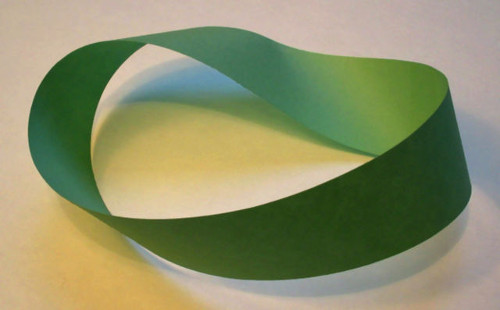
Gabriel Josipovici’s 1974 short story “Mobius the Stripper” is subtitled “A Topological Exercise.” The text is written in two strips, which tell two ostensibly different stories.
The first strip tells the story of Mobius, a man of uncertain origin who feels a metaphysical need to strip, “to take off what society has put on me” and discover his true self. He takes a job at a London club, where he talks as he performs and feels his essential self emerging. In the end, though, he comes to an existential crisis, unable to find any ultimate meaning, and shoots himself in his room to provide “an example to all.”
The second strip describes the troubles of an unnamed writer who shuts the world away, eager to write something new but overcome with writer’s block and intimidated by the writers of the past. His friend Jenny urges him to see a stripper named Mobius. “It’ll change your ideas,” she says. “Give it a break and you’ll all of a sudden see the light.” In the end, desperate to overcome the block, he begins to write a story about Mobius, whom he has never seen. “Perhaps it was only one story, arbitrary, incomplete, but suddenly I knew that it would make its own necessity and in the process give me back my lost self.”
If these tales are written on either side of a strip of paper, and one end of the strip is given a half-turn and then attached to the other, they create one unending story in which Mobius’ example frees the writer, who in his story gives new fictional depth to Mobius’ struggle, which lends it greater meaning and inspiration, and so on. Mobius is described differently in the two stories, suggesting that the Mobius of the first story is largely an invention of the writer in the second story. So where does the inspiration come from?
No Answer
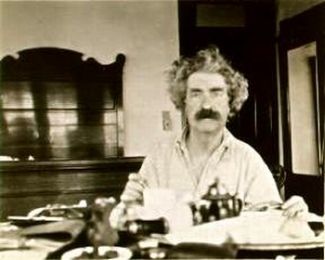
In 1890 the editor of the New York World invited Mark Twain to offer a message of holiday goodwill to its readers. He sent this:
It is my heart-warm and world-embracing Christmas hope and aspiration that all of us — the high, the low, the rich, the poor, the admired, the despised, the loved, the hated, the civilized, the savage — may eventually be gathered together in a heaven of everlasting rest and peace and bliss — except the inventor of the telephone.
Mark Twain
Hartford, Dec. 23
Hands-Free Warfare
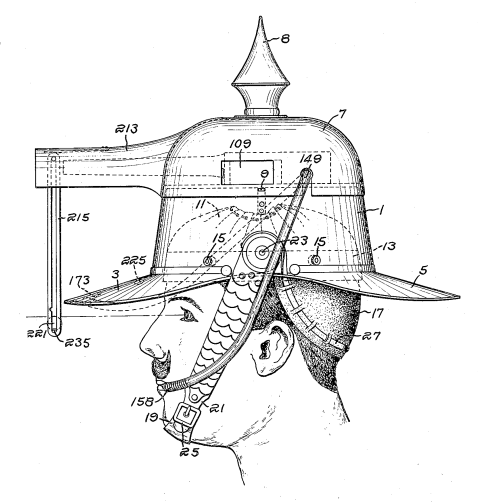
In 1915, Vermont inventor Albert Pratt proposed a new weapon: a head-mounted gun. You strap the helmet to your head and hold a hollow tube in your mouth; when you blow through the tube, the gun fires a bullet at whatever you’re looking at.
“The weapon described has many advantages,” Pratt writes confidently. “The gun is automatically aimed unconsciously and incidentally to the turning of the head of the marksman in the direction of the target. In self-protection, one immediately, instinctively turns the head in the direction of attack to see the enemy, or, in hunting, toward any sound made by nearby game. Thus the gun is automatically directed toward the mark in the course of the first instinctive movement. With the gun thus aimed, the only further operation necessary to fire the same is to blow through the tube and thereby expand the bulb and operate the trigger. This is accomplished entirely from the head of the marksman, leaving his hands and feet free further to defend himself or for other purposes as desired.”
“Under some circumstances the gun can be fired not only without the use of the hands and feet, but also without the use of the eyes of the marksman. For example, in hunting at night if an animal made a sound in underbrush, the head of the marksman would be instinctively turned in the direction of the sound and then the gun would be fired, without the use of the eyes of the marksman.”
If that’s not enough, Pratt also says that the helmet can be detached from its base and used as a cooking utensil. “The spike may be stuck in the ground to support the utensil or may be detached therefrom as desired.”
In a Word
apanthropy
n. a love of solitude
aphilanthropy
n. a dislike of social intercourse (“want of love to mankind” — Johnson)
misoxene
n. a hater of strangers
Noted
Bill Nucker once told me that the sober response to a young wife’s obvious query about the small tear in his trousers acquired from a see-saw whilst scooping up the small son who had just fallen, giggling, from it in startlement at a response to his ocarina playing from a passing bird was: No, ma’am, this is a teetotaler’s teeter-totter ‘tater-tooter tweeter twitter titter tottered tot toter tatter.
— Charles W. Bostick, Word Ways, February 1977
The Five Circles Theorem
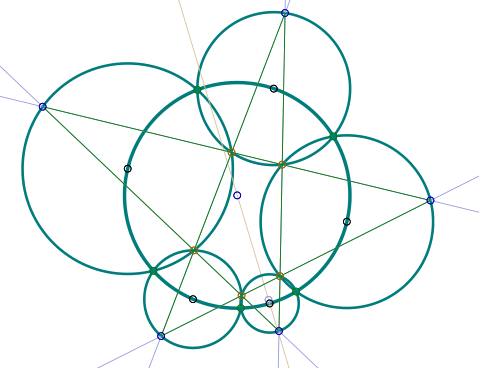
If the centers of five circles lie along the circumference of a sixth so that they overlap like the links of a chain, and if each intersects its neighbor on the sixth circle as well, then drawing lines as shown through the remaining intersections will form a pentagram whose points lie on the five circles.
A 19th-century schoolchild defined a circle as “a round straight line with a hole in the middle.”
Knife Act
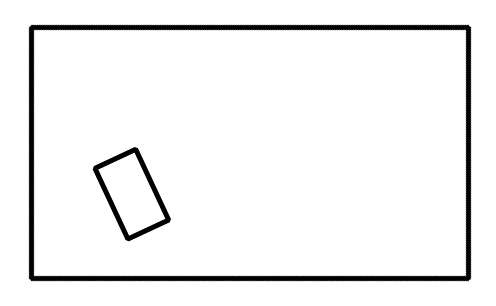
I have just baked a rectangular cake when my wife comes home and barbarically cuts out a piece for herself. The piece she cuts is rectangular, but it’s not in any convenient proportion to the rest of the cake, and its sides aren’t even parallel to the cake’s sides. I want to divide the remaining cake into two equal-sized halves with a single straight cut. How can I do it?



